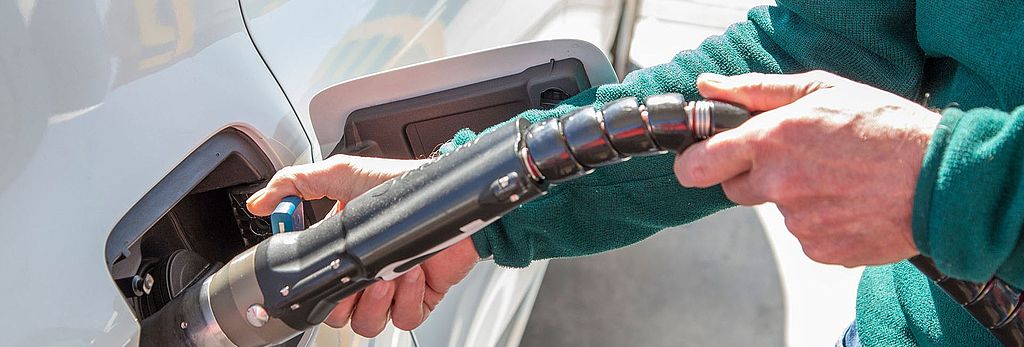
CNG (compressed natural gas)
What is CNG?
Compressed natural gas (CNG) refers to natural gas compressed to about 200 to 250 bar. Thanks to its high energy density and low emission values, it is a good fuel for powering vehicles, provided they are equipped with a suitable high-pressure tank. Using CNG as fuel reduces carbon monoxide and nitrogen oxide emissions by up to 80%, CO2 emissions by up to 25%, and the proportion of methane hydrocarbons by up to 73%. Another advantage of CNG is that its processing into a fuel doesn’t require any additives or complicated refining processes.
Much of the CNG on the market comes from fossil fuel, so it contains natural gas. But it can also consist of refined biogas, and come from renewable energy sources, in which case it is called bio-CNG and reduces CO2 emissions up to 85%.
The abbreviation CNG is used internationally and is accordingly seen on motorway signs and service-station price signs. The gaseous fuel is available in two grades, H or L (high or low) referring to the energy content of the gas. The energy content of a kilogram of H gas is about 20% higher than that of L gas and roughly equivalent to 1.5 liters of gasoline or 1.3 liters of diesel. The CNG provider has no influence on the gas grade, as only one or the other grade is supplied from the existing local network. A label at the CNG pump notifies the consumer of the gas grade being supplied.
The quality requirements of CNG/natural gas are regulated throughout Europe in DIN EN 16723-2. DIN EN 16723-2 specifies characteristics, test methods and threshold values for calorific value, density, methane number and concentration, oxygen, hydrogen, and sulfur content, and compressor oil and suspended matter content, among many other things.
In its 2010 energy policy, the German federal government resolved to promote vehicles that run on CNG because of their clean combustion. For this reason, CNG and bio-CNG is taxed more favorably than gasoline and diesel, which reduces the cost of fuel for vehicles that run on CNG.
CNG is not to be confused with liquefied petroleum gas (LPG). The main difference between these gases is that LPG is stored as a liquid, fuelled at 8-10 bar, and is heavier than air. CNG is compressed to 250 bar and is gaseous and lighter than air. That means that in case of an accident or leak, LPG remains as a puddle on the floor and represents a danger, while CNG rises and evaporates.
Fuels are traded by the Mabanaft group: OIL! Tankstellen, for example, offers CNG as a fuel at several of their service stations.
Status: December 2015
All information subject to change. Errors and omissions excepted.

